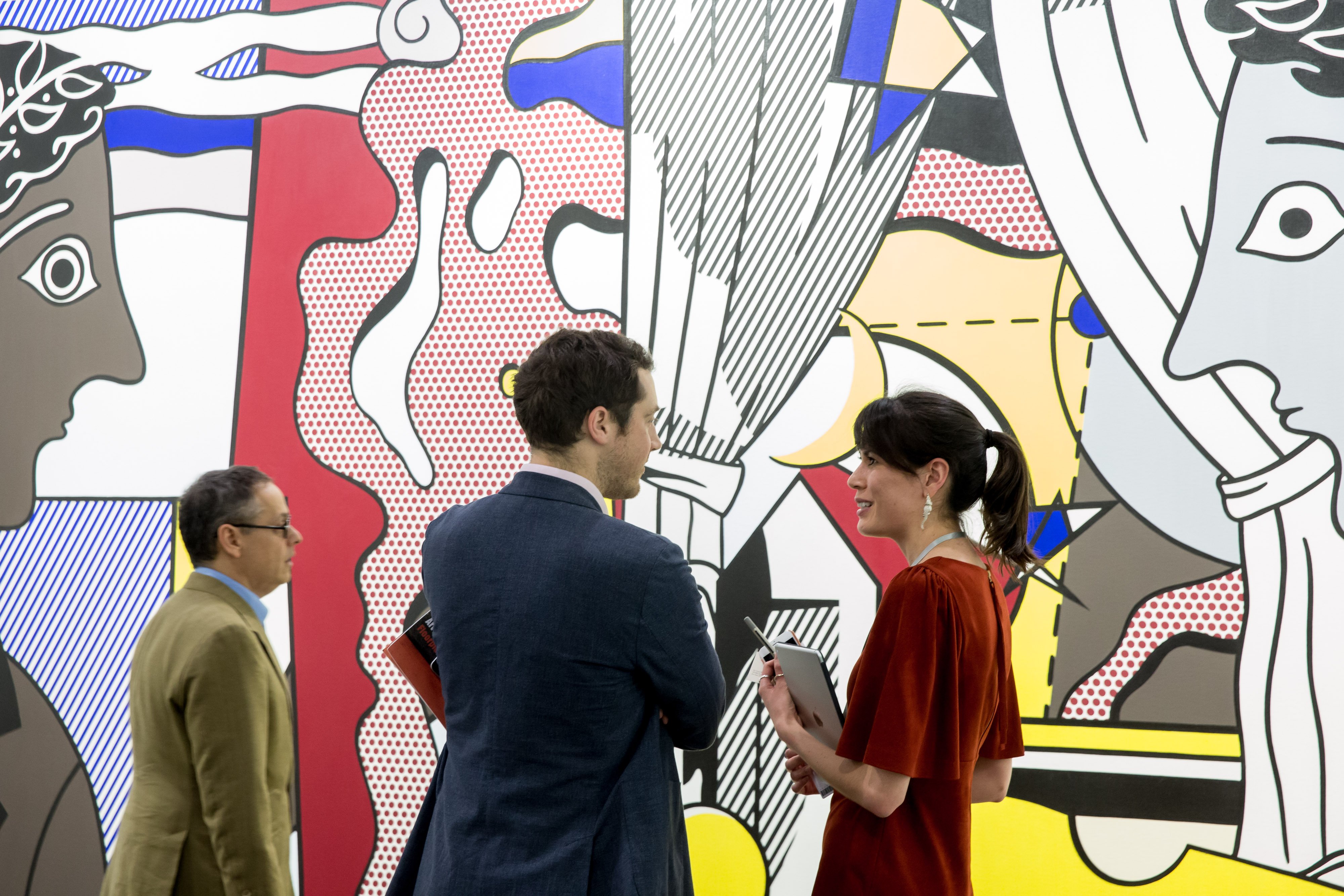
As the art industry gears up for another edition of Art Basel Hong Kong, many participating dealers are once again dreaming big about the Chinese market’s gargantuan prospects. But the latest report from the European Fine Art Foundation (TEFAF) could be a serious wake-up call.
Released today at TEFAF’s flagship fair in Maastricht, the study digs deep into the Chinese art market’s past, present, and future. Most surprisingly, it suggests that the market’s next five to 10 years may look a lot less like a long-hyped bonanza and a lot more like 2018, when (as noted in the latest artnet Intelligence report) the Chinese market plummeted more than 16 percent in the midst of the country’s worst economic slowdown in 28 years.
The TEFAF report’s author is Kejia Wu, who now serves as a professor at Sotheby’s Institute of Art after more than a decade in China advising museums, biennials, and art fairs. Her conclusions are drawn from an extensive series of interviews and surveys conducted with Chinese collectors (including several private-museum founders), gallerists, auction-house executives, and other industry professionals based inside the People’s Republic. Although her conclusions aren’t uniformly ominous, several combine to create a far gloomier picture of the market’s prospects than many in the west have come to expect.
Below are five takeaways suggesting that, when it comes to the art trade in China over the next decade, we should proceed with caution.
A bidder at Christie’s in Shanghai. Photo: Peter Parks/AFP/Getty Images.
1. Chinese secondary-market sales are unlikely to return to their 2011 peak.
In 2011, turnover hit a record $5.1 billion for fine art and antiques in mainland Chinese auctions, according to the annual report produced by artnet and the China Association of Auctioneers (CAA). But Wu concludes that much of that activity was froth courtesy of pure speculators, most of whom have exited the art market during the turbulence in the succeeding eight years—and China has not yet produced enough genuine buyers to fill the resulting void.
2. Don’t count on primary-market sales for Chinese contemporary artists to reach the heights of 2006 and 2007 again.
The report reinforces the notion that the elite tier of Chinese collectors and the next generation to come (specifically, buyers born in the 1980s) have developed a strong thirst for international contemporary art. This shift has been a major factor in enticing a growing number of western galleries to pivot to China through art fairs and new permanent locations—and offer works by artists from east and west alike once they arrive.
Given the underwhelming growth in the buyer base mentioned above, it’s likely that western contemporary art will naturally cannibalize some of the sales pie dominated by Chinese artists prior to the 2008 global financial crisis. So if you’re a Chinese artist without high-end western gallery representation, brace yourself for a rocky road ahead.
3. Prepare for serious consolidation in the Chinese gallery and art-fair sectors.
This conclusion naturally follows from the gathering strength of western galleries and western contemporary artists within China, as well as Chinese collectors’ growing interest in buying at international art fairs. The effects reverberate down the supply chain: As a limited number of Chinese buyers spends more money on contemporary art at western galleries, it will starve many Chinese contemporary galleries. (We saw the beginnings of this dynamic at last year’s Art Basel Hong Kong.) And if Chinese contemporary galleries begin to fold at scale, so too will many of the homegrown Chinese art fairs that rely on them as exhibitors (and clients). The end result: The western winners take all.
4. Minor regulatory reforms may be the best the art trade can hope for.
Wu leaves open the possibility that Beijing could soften some tax and currency restrictions that have limited the art market’s growth, particularly concerning import levies on foreign acquisitions (if domestic auction houses scale back their lobbying efforts) and limits on the amount of money Chinese citizens can move out of the country (if the nation’s economy improves). But she deems it “unlikely” that the state will license western auctioneers to sell antiquities on the mainland or award significant tax breaks to private museums or major gifts to cultural institutions. In other words, incremental improvements are possible, but don’t hold your breath for transformative ones.
5. China’s private museums are an endangered species.
Based on her interviews with private-museum owners, Wu concludes that the operating costs of these endeavors, which ran from about $1 million to $6 million annually within her limited sample, are unsustainable without a major shift in state tax policy. And since she estimates home-grown reforms to be more than a decade off (if they arrive at all), she expects that many of the country’s approximately 1,500 private museums will be forced to either liquidate their collections or donate them to the state. (Although one collector, Budi Tek, is pursuing a collaboration with LACMA to sustain his private institution, this is a difficult strategy to scale.)
Founders’ desires for their philanthropic legacies may be the deciding factor at the crossroads. But like so much else about the Chinese art market’s future, either outcome is suddenly sobering.